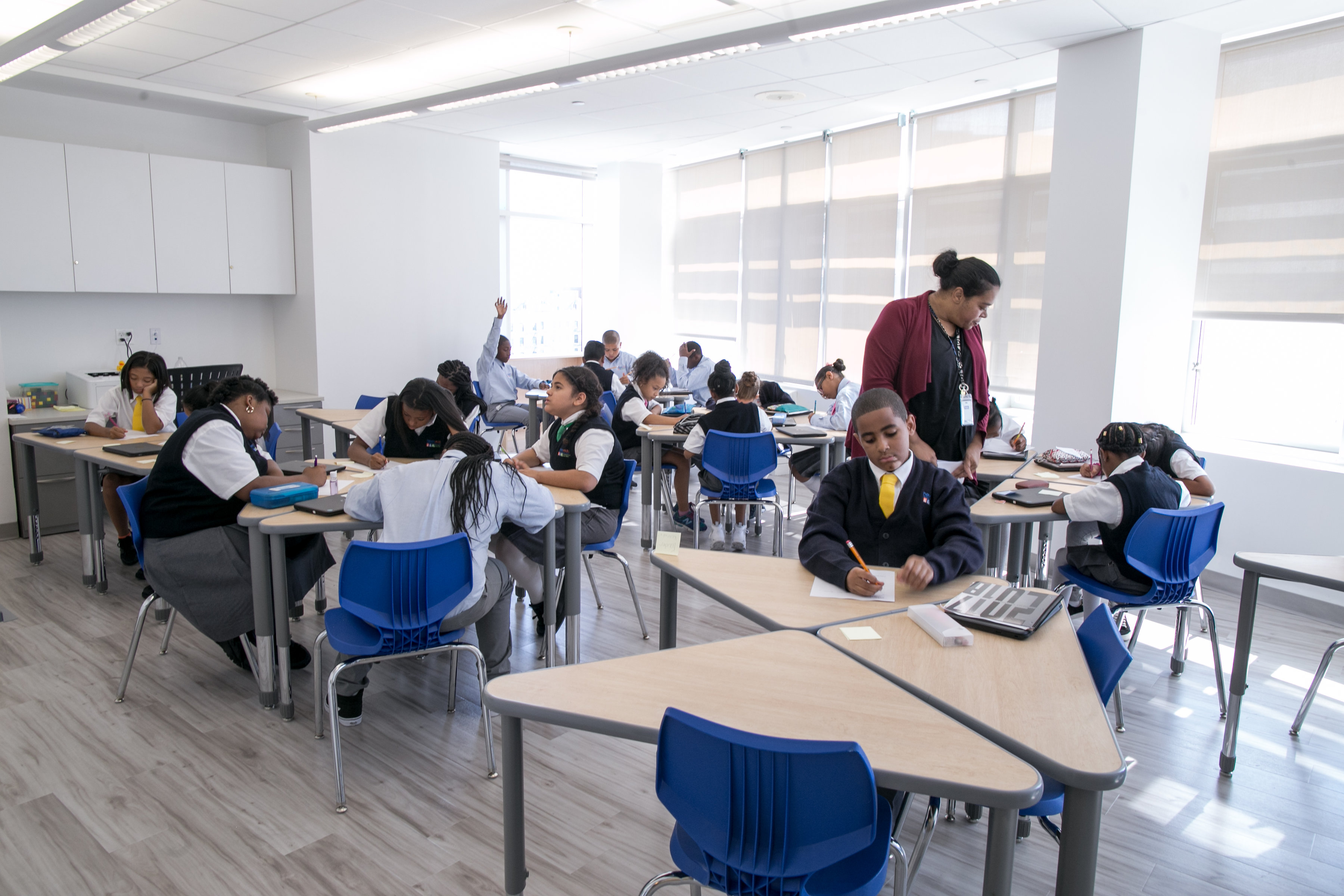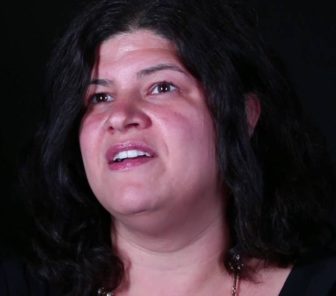
Mott Haven Academy Charter School
.
The New York Foundling has been protecting children and strengthening families for nearly 150 years and is now one of oldest and largest child welfare organizations in the country. Some years ago, The Foundling began focusing on education, recognizing that it is the key to developing healthy futures for our youth. It launched Mott Haven Academy Charter School, where two-thirds of the student body is from the child welfare system and one-third is from the surrounding community in the Bronx — one of the poorest in the country. Our goal was to create a learning environment in which victims of trauma could thrive and to share the lessons learned along the way with others in our field who are dealing with the same challenges.

Jessica Nauiokas
That was 10 years ago. Our experiment has proven successful, but not without its struggles, as we had to create a new educational model for a population with which no one previously had achieved sustained success. Our children are performing extremely well and, equally important, we now have a greater understanding of what works and how to replicate it.
Initially, we found progress elusive. It was only after more fully appreciating the effect trauma has on a child’s learning process and incorporating that into our curriculum that real achievement occurred. Having gone through that process, we now have strong evidence that our approach is working. Last year:
- Overall, in both English and math, the percentage of students with passing scores at Haven Academy was triple the percentage in the surrounding community school district.
- Our students’ performance also exceeded the averages for New York City, New York state and other charter schools.
- Many students with IEPs for Special Education needs became “declassified” or required fewer services as their academic progress deepened.
- The formation of healthy attachments enabled struggling students to close the gap between them and their peers, making more than 1.4 years of academic progress.
- Student attrition was very low and more than 90 percent or more teachers and staff have returned each year.
What are the keys to achieving these results? What tactics are we using that are replicable and scalable? What can child welfare organizations around the country learn from our experiences? How can they develop programs in their communities, especially when government usually places child welfare and school systems in separate silos?
Most child welfare organizations are not going to be in a position to launch their own charter schools, but many serve children in communities just like Haven Academy, where the percentage of the population in the child welfare system is relatively high, as is the percentage of children who have been touched by trauma, abuse or neglect at some point in their lives. Many have the ability to partner with education departments and individual schools to develop joint programs. Here are things to consider:
- Focus on building positive attachments. Child welfare professionals can offer valuable expertise in creating new professional development programs for educators, giving them the tools they need to work with children who have been impacted by trauma. Traditional education professional development doesn’t deal with attachment issues, which are present in a large percentage of children. A child with attachment issues is going to be particularly distrustful, having been neglected by adults in the past, and will assume that their teacher either doesn’t really care about them or isn’t going to be part of their lives for very long. Building relationships requires educators to have a certain mindset — creating predictable environments; using reasonable, proportionate and predictable incentives and consequences; and being completely consistent in following through on what they say they’re going to do.
- Start where the child starts. Many kids in care have had their education disrupted multiple times in a variety of ways. They’ve moved, changed schools, missed school because of medical appointments or because of their parents’ schedules. Past trauma may have caused other types of learning delays or memory problems. All too often, children are incorrectly classified as having special education needs when, in reality, their deficits are more related to the amount of school they’ve missed than learning disabilities. Teachers need to be trained to recognize the difference and schools need a process for developing individualized assessments and intensive, individual and small group interventions.
- Develop a culture that values and teaches empathy. Educators and child welfare professionals must be trained in the recognition of empathy — or the lack of it — in children. For many children who have suffered the effects of trauma, their sense of empathy is, in effect, deactivated. They are unable to recognize how their behavior impacts other people and how the world around them impacts their own lives and behavior. Children with a typical background experience emotions and shift from one feeling to another as their circumstances and stimuli change. Children who have been traumatized shut down; they don’t experience emotions the same way and lose the learning experiences that come with those feelings. Teachers must be able to recognize this empathy deficit and be knowledgeable about strategies to validate children’s experiences and their feelings about them. If a sense of empathy can be reactivated, it will be beneficial in virtually all aspects of the child’s education.
Supporting educators with some of the tools and training usually employed by child welfare professionals and increasing the contact between the two will help to create more trauma-informed schools. Ultimately, it will help bridge the education gap between at-risk youth and students in the general population nationwide. Our experience at Haven Academy is showing that it is within our reach.
Jessica Nauiokas is head of school of the Mott Haven Academy Charter School, which she co-founded in 2007. She received a 2017 Blackboard Award and was featured in Richard Whitmire’s book “The Founders” for her innovative work on child welfare education reform in 2016.





























